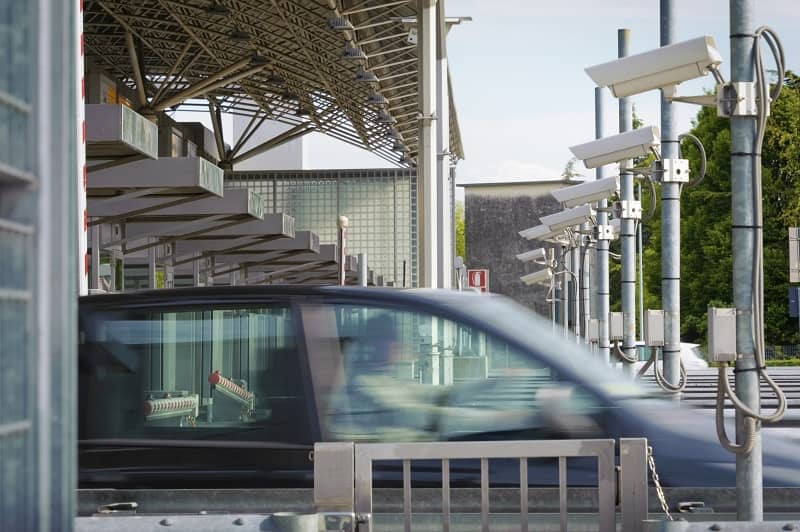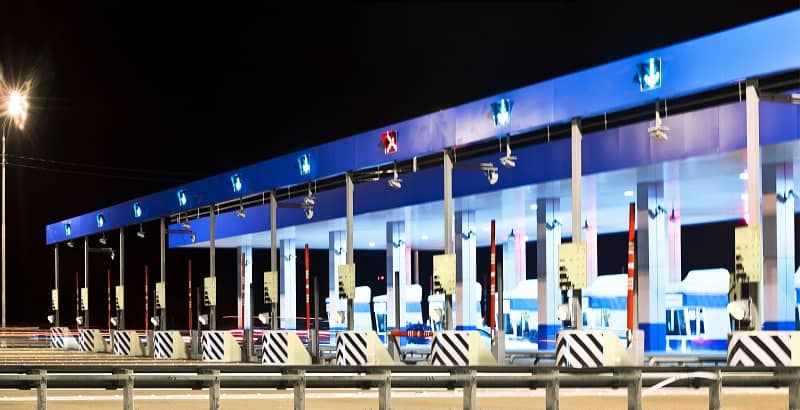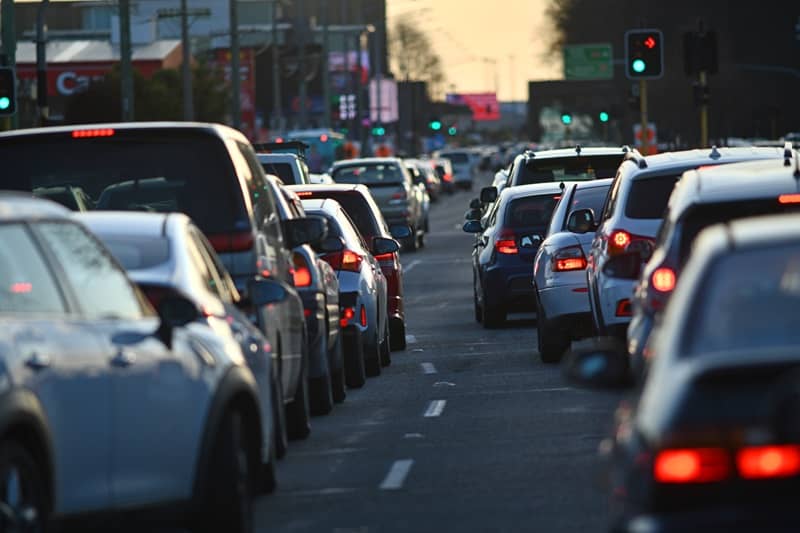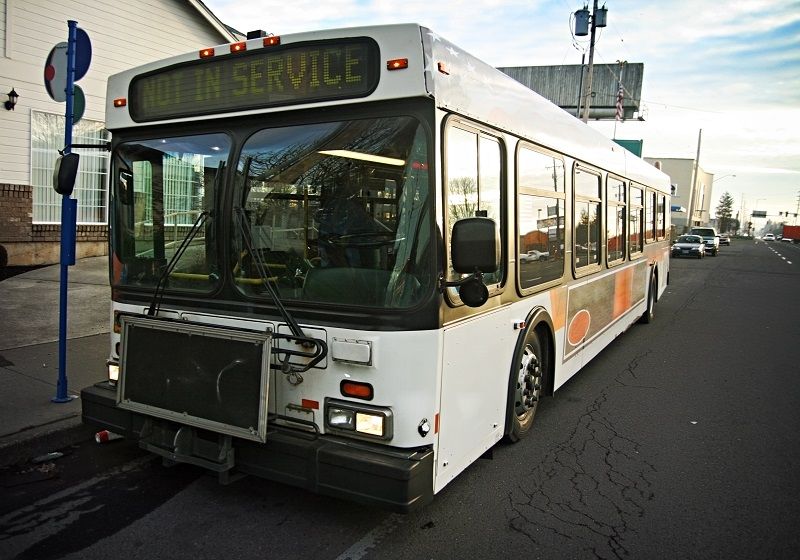By John Charles
Testimony before the Metro Council Regarding the Milwaukie Light Rail Line Resolution No. 10-4133
Metro proposes to allocate $144.8 million of flexible funding to one corridor in SE Portland to move a handful of people who could be served just as well by Bus Rapid Transit at less than .2% of the capital cost, and the staff concludes that there is no opposition “known at this time.” Only in the Orwellian world of regional transportation decision-making could two public votes AGAINST the South/North LRT project be re-defined out of existence 12 years later.
The analytical argument against this project is actually much stronger now than it was in 1998 when it was voted down. We know more about alternatives, and about the true costs of rail. Continued rail expansion inevitably cannibalizes service elsewhere, as shown by the fact that TriMet has had a 38% increase in funding over the past five years while service has dropped by 10%.
The inevitable result of this project will be to lose important service elsewhere. However, there is still a way to improve transit without bankrupting the agency.
Bus rapid transit has matured as a viable transit alternative.
The Los Angeles MTA, which has tried just about everything to increase ridership, has developed a relatively cost-effective program called Metro Rapid transit. This system relies on distinctive, low-floor CNG buses with red stripes providing fast, reliable transit service with headways as low as 2.5 minutes during the peak commutes. A summary of the key characteristics of the Metro Rapid Transit bus system compared with the proposed Milwaukie LRT project and the Portland Streetcar is shown below:
The proposed Milwaukie light-rail line is 554 times more expensive to build per-mile than the Rapid Bus alternative; in what ways is it 554 times better? In fact, it is not superior by even a single metric. The Rapid Bus system is cheaper, more flexible, almost twice as fast, arrives more often, is easier to implement, is a high-capacity system, and doesn’t require its own exclusive bridge over a major river.
While this project has been rubber-stamped many times before, it’s not too late to move to a lower-cost strategy. Most of the budget has yet to be spent, and a FFGA is at least a year away from being signed.
Light rail construction and operation is cannibalizing TriMet’s “Frequent Bus Service”, which is the workhorse of the system.
The big success story at TriMet over the past decade has been the growth of so-called “Frequent Bus Service” (every 15 minutes or better, all day) on a growing number of bus routes. In 1998 only 4 bus lines had frequent service; as of last fall there were 16 routes totaling 164 miles, and those 16 routes carried 57% of all TM bus trips. Between 1999 and 2008, frequent-service ridership increased 236%.
The evolution of that program is displayed below.
Unfortunately, this success story is being dismantled. TriMet is in a fiscal death spiral, caused by (1) foolish expenditures on rail transit, and (2) unsustainable labor costs. As of Nov 29, 2009, service has been cut except for AM and PM peak hours. Additional service cuts are scheduled for July. TM General manager claims in this morning’s Oregonian that Frequent Service will be restored, but there is no plan to do so.
Although bus service doesn’t get much respect within Portland transit circles, it is the foundation of the system. More importantly, expanding it is relatively inexpensive. Unlike large rail projects, adding bus
service does not take a decade of planning, hundreds of public hearings, the seizure of numerous properties through eminent domain, customized equipment, or special bridges or tunnels.
TriMet has not been a responsible steward of past infusions of cash; Metro’s approval of another $144.8 million of scarce flex funds will simply enable more of this dysfunctional behavior.
TriMet has become the classic “black hole” of public spending; vast sums disappear into the TM general fund, never to be seen again in the form of useful economic output, as shown below:
TriMet has been granted two payroll tax rate increases in the past seven years: one in 2003, the other in 2009. The first increase went into effect in January 2005, and the rate will continue to rise each year through at least 2014. As a result, a torrent of cash has flowed to the agency. Yet service levels have actually declined by nearly 10%:
This can also be considered in terms of rides per/dollar of revenue:
The problem is that when TriMet commits to massively expensive rail projects, at least 40% of the capital costs have to come from local sources, and some of that is from TriMet’s own general fund. Moreover, once the train opens, the agency has very high operating costs (compared with bus service) because it does not share ROW with millions of other gas-tax paying motorists, as buses do.
The relationship between payroll tax increases and the ongoing operating cost of rail was summarized in a letter dated July 7, 2004 from Fred Hansen to Pete Stark of the Central Eastside Industrial Council. In that letter, Mr. Hansen outlined the need for an increase in the payroll tax rate as approved by 2003 legislature:
“You may be aware that the timing of the payroll tax proposal is linked to the region’s application for federal funds for the I-205/downtown mall light rail project, due August 20 of this year. We are seeking a 60% federal match for these critical projects. In order to qualify for federal funding…TriMet must show its ability to pay for the operation of the I-205/Mall project for a period of at least 20 years.
“Lastly, as we have committed, these revenues will be used only for new projects…the payroll tax increase will only be used to provide new service in the regional system.”
While TriMet did open “new” service last fall with the Green Line, it came at great cost to the rest of the system, as previously noted. Continued obsession with “new” service such as Milwaukie LRT, the CRC rail line, and the Lake Oswego trolley, will commit billions of dollars in expenditures, while no new service from those projects will be seen for years. The inevitable result of will be loss of bus service. We cannot “save” the bus transit village by destroying it with LRT.
Unsustainable labor costs
Metro is not responsible for TriMet’s self-inflicted labor problem, but it’s important to understand the systemic nature of this fiscal time bomb. TriMet has been locked into uneconomic labor contracts since 1994, when then-General Manager Tom Walsh agreed to overly-generous changes to the basic union contract. TriMet board chair Loren Wyss vigorously protested those changes and warned that they would saddle the agency with unsustainable long-term costs. Gov. Barbara Roberts rewarded him for his vigilance by forcing him to resign from the Board. Since then, short-term and long-term labor costs have spiraled out of control:
- Fringe benefits now cost 118% of payroll
- TriMet’s unfunded long-term liability for the union pension plan equals 197% of the cost of annual payroll
- TriMet’s unfunded long-term liability for “other post-employment benefits” (OPEB) equals 484% of the cost of annual payroll
As TriMet’s Budget Advisory Committee concluded last April:
§ If past trends continue, “health plan costs for retired and active employees will increase from 13% of TriMet’s operating costs in FY 10 to 36% of costs in 2030.”
§ TriMet’s $1,932 monthly family healthcare premium is “the highest reported in the 2008 US Transit Systems Survey” (the cost is now roughly $2,200 per month)
§ “TriMet’s current health benefit plan for active and retired employees is unsustainable and its impact on the bottom line will worsen the longer it remains unaddressed.”
More details on these problems are attached in Appendix 1.
TriMet is stuck with long-term labor contracts that will be difficult if not impossible to change. Therefore the only other option for organizational survival is to stop building the high-cost, low-capacity rail projects, and invest in the low-cost, high-capacity bus service that has been implemented elsewhere.
The agency itself is incapable of stopping the spending spree, due to institutional imperatives. Furthermore, no one at TriMet has been elected; they are all appointed. Someone elected by taxpayers should stand up for fiduciary responsibility; each of you has that opportunity today.
Appendix 1
TriMet’s pension costs have been growing steadily for over 25 years. The long-term unfunded liability of both the management plans and union plans have exploded, as displayed below.
Other Post-Employment Benefits (OPEB)
TriMet is now required to explicitly state the long-term obligations to pay for post-employment benefits other than pensions. Since TriMet pays 100% of the cost of medical insurance for all retirees and their dependents, the OPEB burden is considerable. According to the TriMet 2009 Financial Report, the cost of OPEB is as follows:
John A. Charles, Jr. is President and CEO of Cascade Policy Institute, Oregon’s free market public policy research organization.











